Abstract
Monosodium urate deposits almost exclusively in the connective tissues of patients with gout. Acetone dried homogenates of bovine nasal cartilage, but not of other tissues, markedly enhances the solubility of urate in buffers having molarities and hydrogen ion concentrations similar to that of most body fluids. The components of cartilage responsible for this effect are the proteinpolysaccharides, compounds of protein and chondroitin sulfate, called PPL. A progressive increase in PPL concentration results in a corresponding increase in urate solubility. If, on the other hand, unbound chondroitin sulfate or PPL digested by trypsin is used, then no significant augmentation of urate solubility occurs indicating that the integrity of the molecule is essential. One subfraction of PPL, PPL5, causes an even more exaggerated response while another, PPL3, causes a lesser one. These proteinpolysaccharide macro-molecules also inhibit the crystallization of urate from a supersaturated medium. The mechanism of the solubilizing phenomenon is not known. It is suggested that some type of physical or chemical binding is responsible. When, as a result of normal or accelerated connective tissue turnover, PPL is enzymatically destroyed, urate crystals then precipitate from the saturated tissue fluids.
Full text
PDF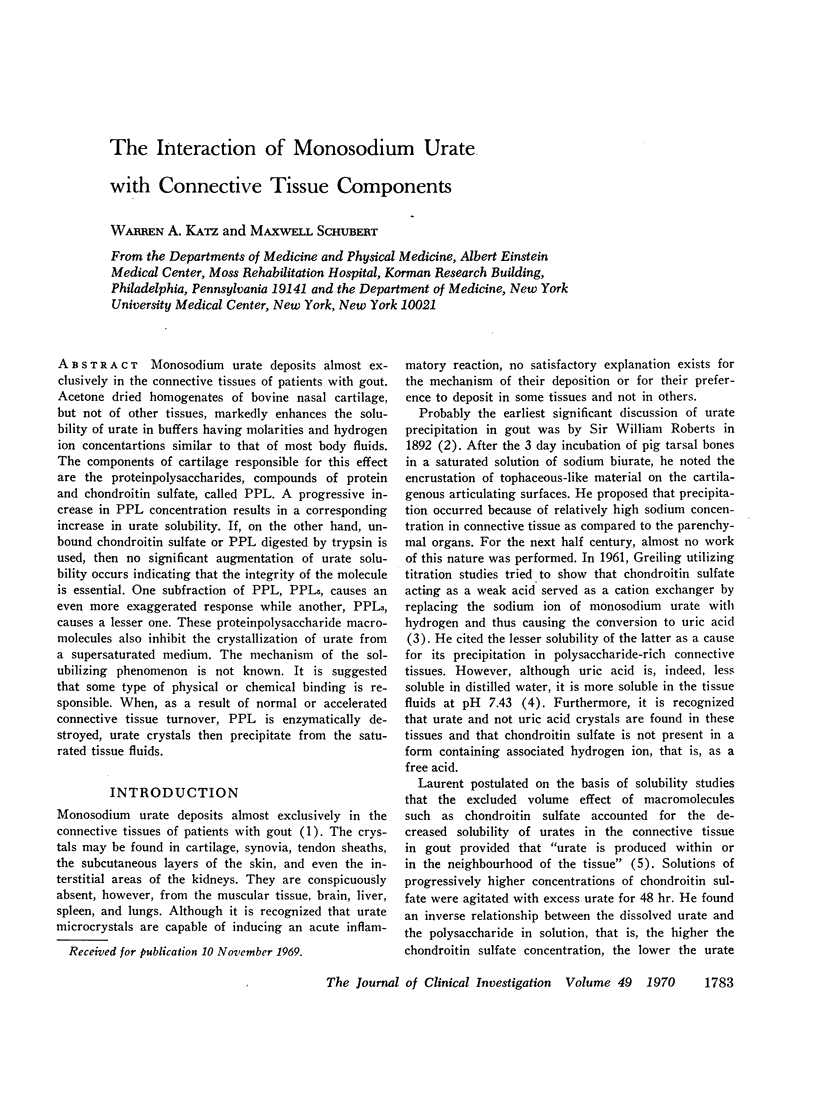
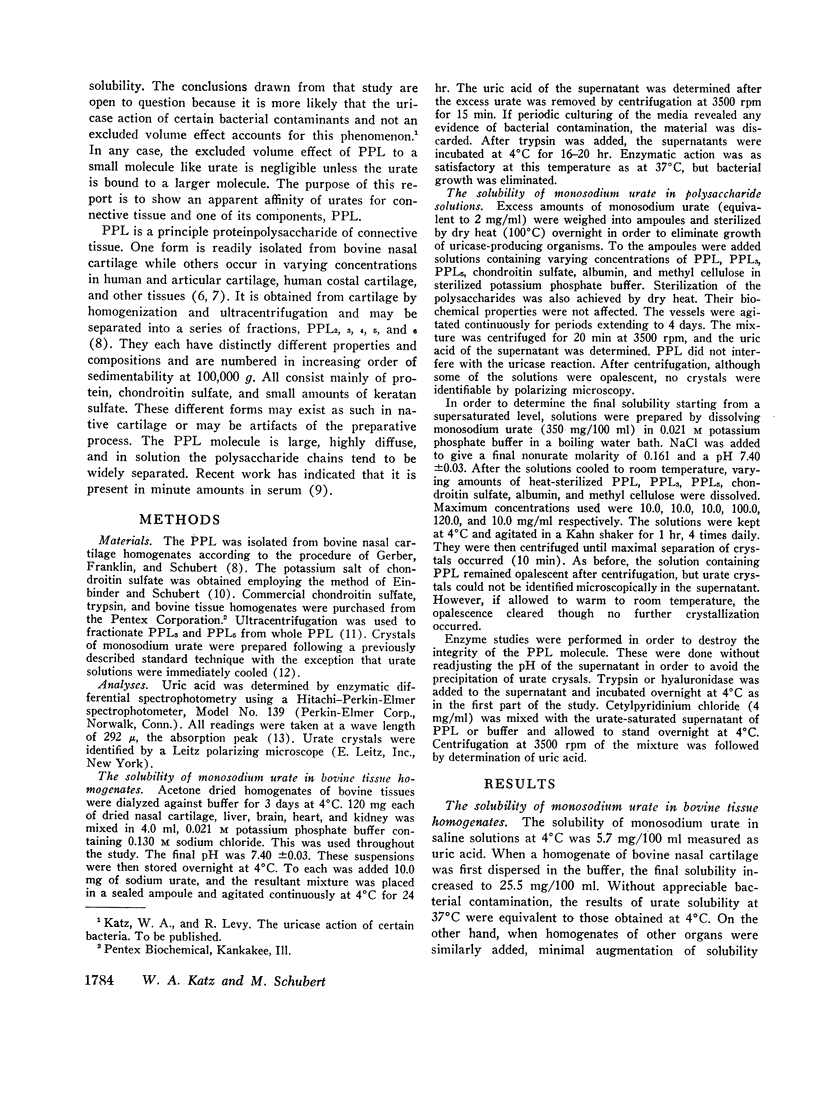
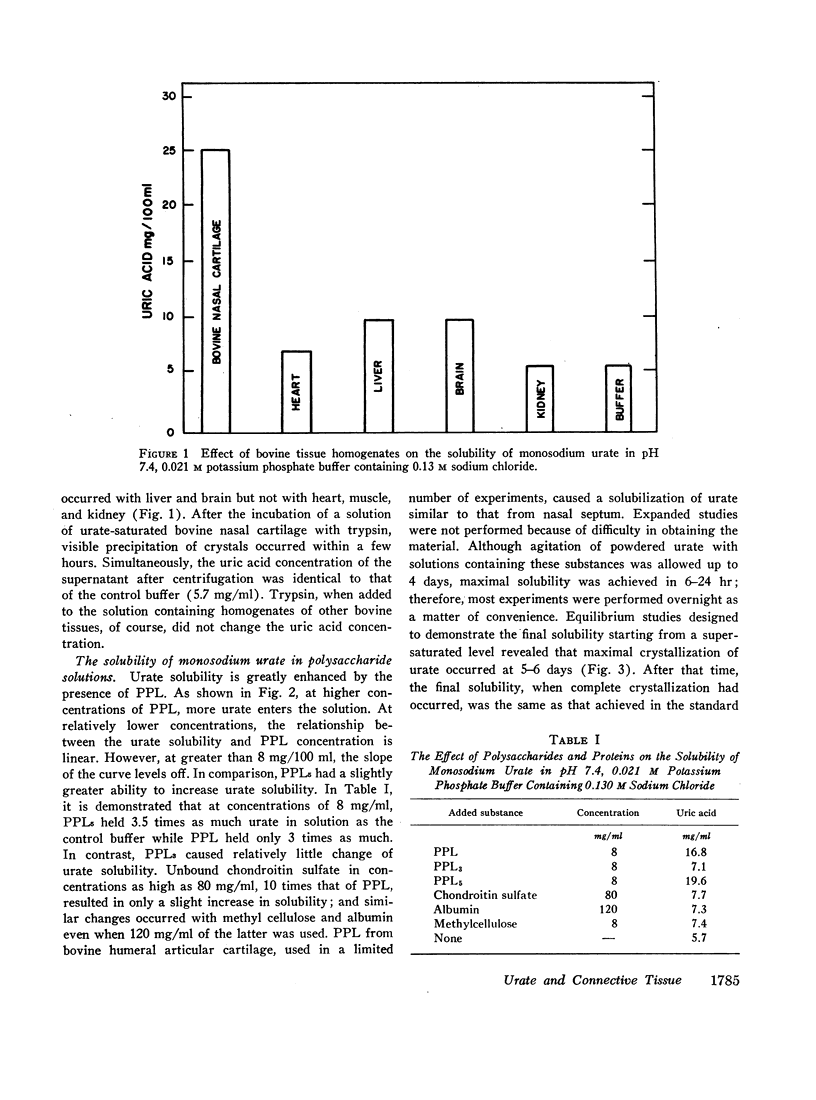
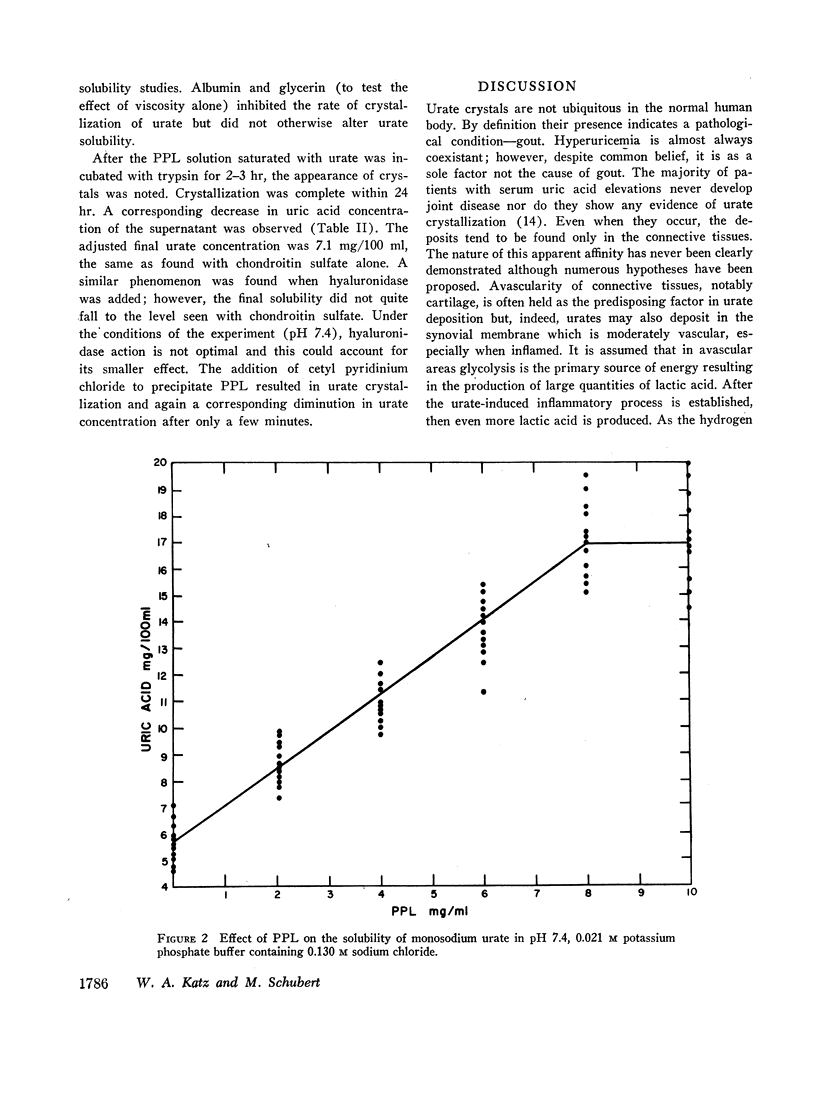
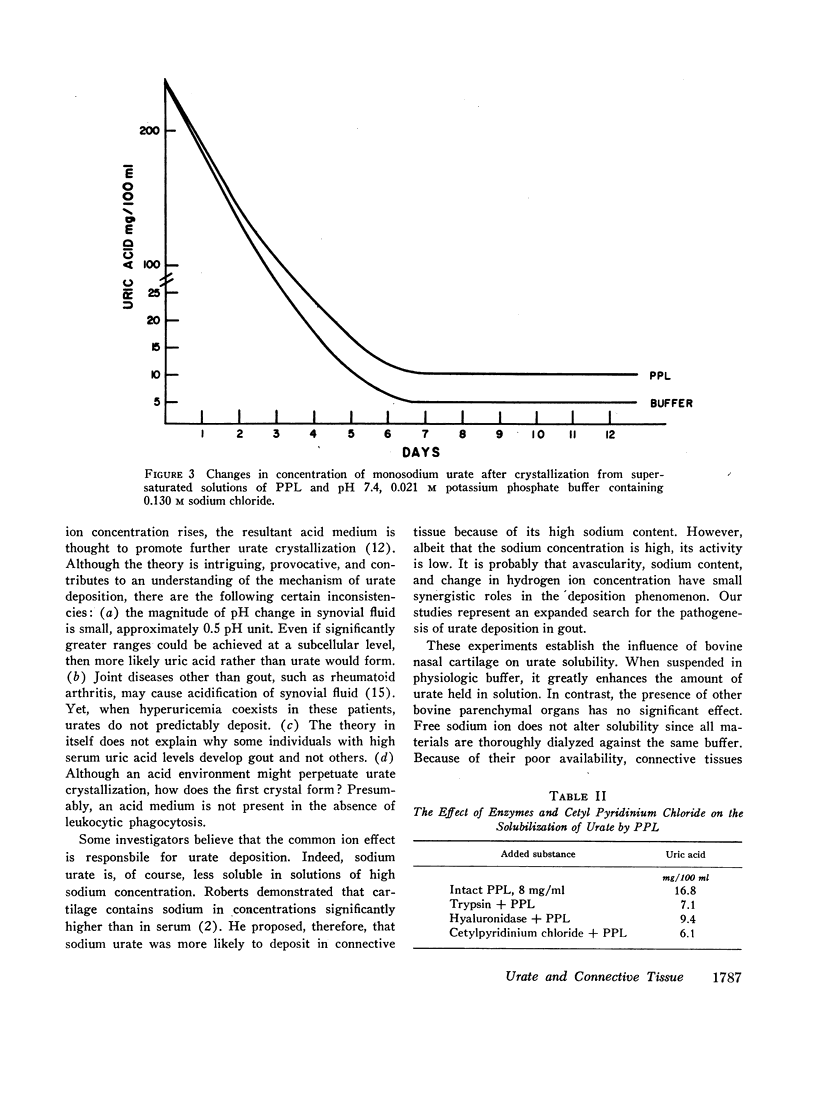

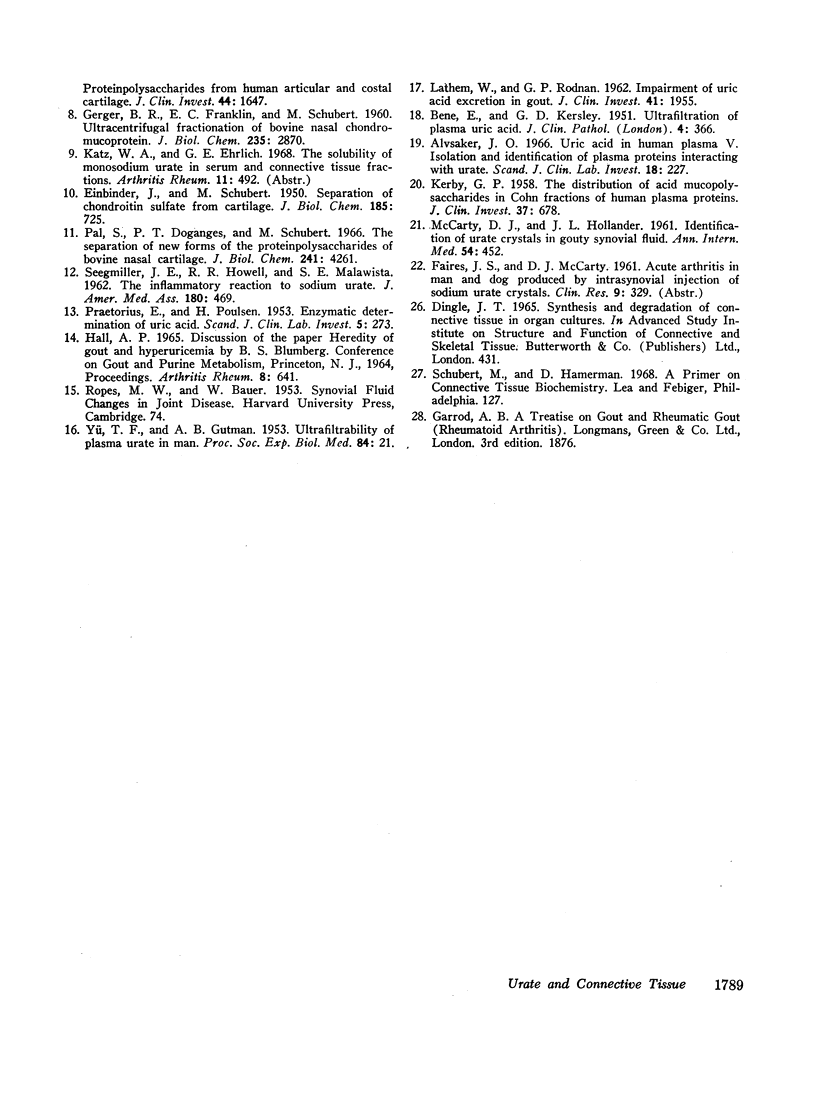
Selected References
These references are in PubMed. This may not be the complete list of references from this article.
- Alvsaker J. O. Uric acid in human plasma. V. Isolation and identification of plasma proteins interacting with urate. Scand J Clin Lab Invest. 1966;18(2):227–239. doi: 10.3109/00365516609051819. [DOI] [PubMed] [Google Scholar]
- BENE E., KERSLEY G. D. Ultrafiltration of plasma uric acid. J Clin Pathol. 1951 Aug;4(3):366–369. doi: 10.1136/jcp.4.3.366. [DOI] [PMC free article] [PubMed] [Google Scholar]
- EINBINDER J., SCHUBERT M. Separation of chondroitin sulfate from cartilage. J Biol Chem. 1950 Aug;185(2):725–730. [PubMed] [Google Scholar]
- GERBER B. R., FRANKLIN E. C., SCHUBERT M. Ultracentrifugal fractionation of bovine nasal chondromucoprotein. J Biol Chem. 1960 Oct;235:2870–2875. [PubMed] [Google Scholar]
- KERBY G. P. The distribution of acid mucopolysaccharides in Cohn fractions of human plasma proteins. J Clin Invest. 1958 May;37(5):678–681. doi: 10.1172/JCI103653. [DOI] [PMC free article] [PubMed] [Google Scholar]
- LAURENT T. C. SOLUBILITY OF SODIUM URATE IN THE PRESENCE OF CHONDROITIN-4-SULPHATE. Nature. 1964 Jun 27;202:1334–1334. doi: 10.1038/2021334a0. [DOI] [PubMed] [Google Scholar]
- Lathem W., Rodnan G. P. IMPAIRMENT OF URIC ACID EXCRETION IN GOUT. J Clin Invest. 1962 Nov;41(11):1955–1963. doi: 10.1172/JCI104653. [DOI] [PMC free article] [PubMed] [Google Scholar]
- MCCARTY D. J., HOLLANDER J. L. Identification of urate crystals in gouty synovial fluid. Ann Intern Med. 1961 Mar;54:452–460. doi: 10.7326/0003-4819-54-3-452. [DOI] [PubMed] [Google Scholar]
- PRAETORIUS E., POULSEN H. Enzymatic determination of uric acid; with detailed directions. Scand J Clin Lab Invest. 1953;5(3):273–280. doi: 10.3109/00365515309094197. [DOI] [PubMed] [Google Scholar]
- Pal S., Doganges P. T., Schubert M. The separation of new forms of the proteinpolysaccharides of bovine nasal cartilage. J Biol Chem. 1966 Sep 25;241(18):4261–4266. [PubMed] [Google Scholar]
- Rosenberg L., Johnson B., Schubert M. Proteinpolysaccharides from human articular and costal cartilage. J Clin Invest. 1965 Oct;44(10):1647–1656. doi: 10.1172/JCI105271. [DOI] [PMC free article] [PubMed] [Google Scholar]
- SOKOLOFF L. The pathology of gout. Metabolism. 1957 May;6(3):230–243. [PubMed] [Google Scholar]
- YU T. F., GUTMAN A. B. Ultrafiltrability of plasma urate in man. Proc Soc Exp Biol Med. 1953 Oct;84(1):21–24. doi: 10.3181/00379727-84-20528. [DOI] [PubMed] [Google Scholar]


